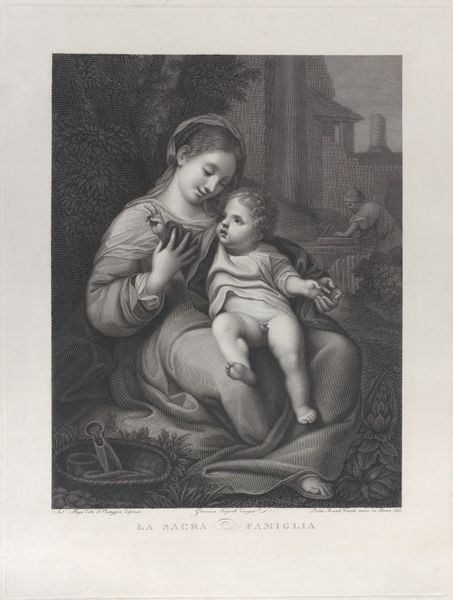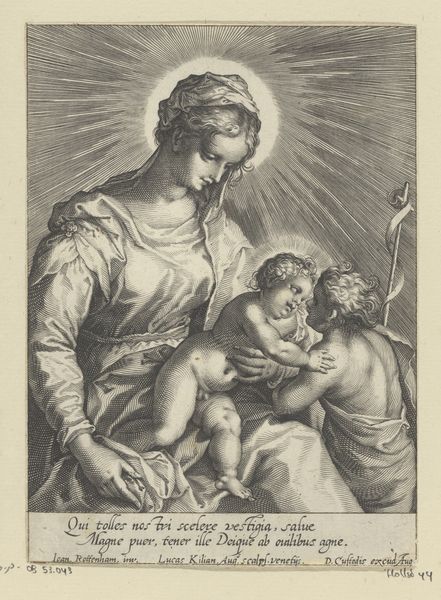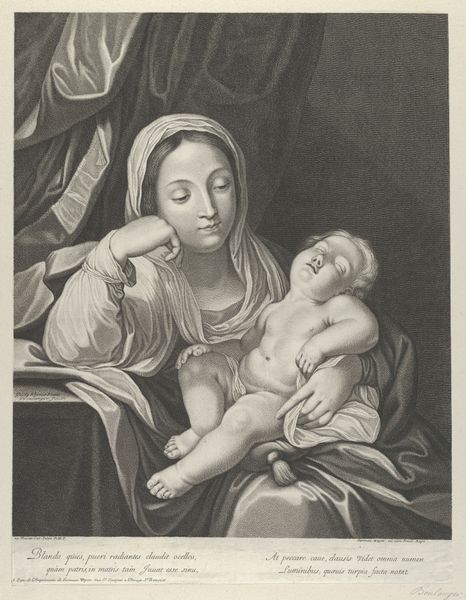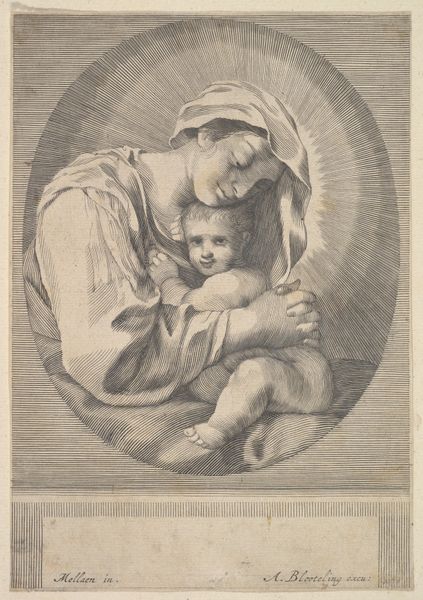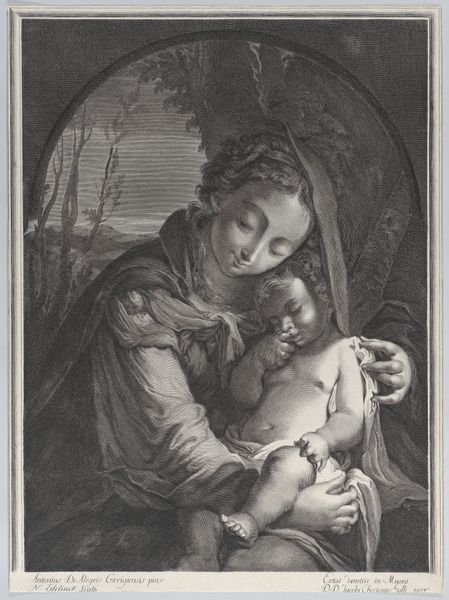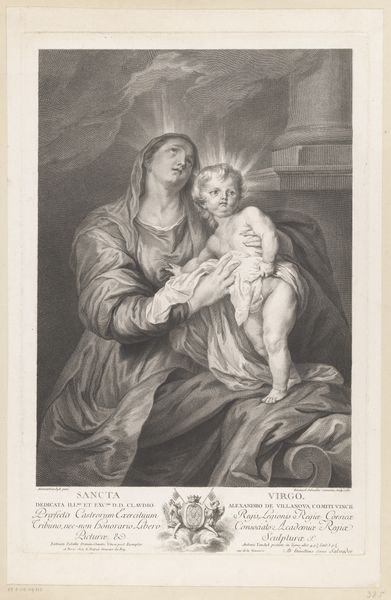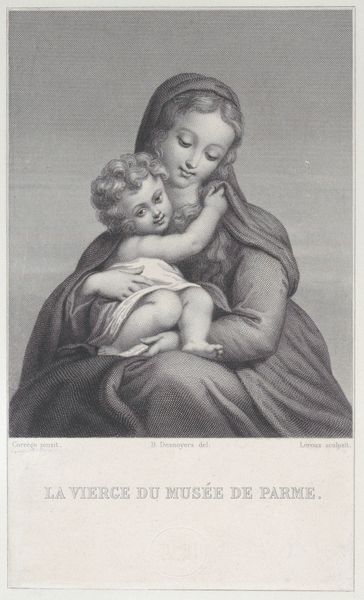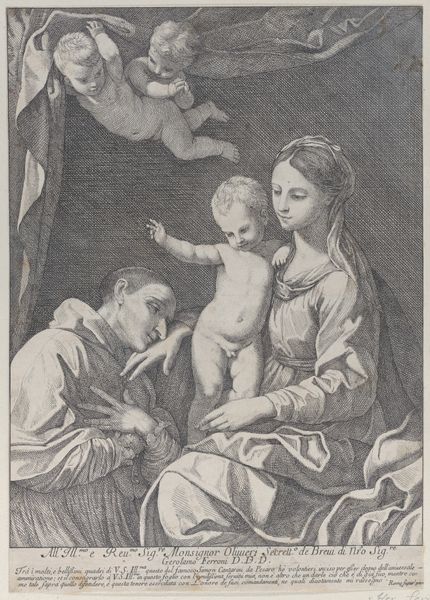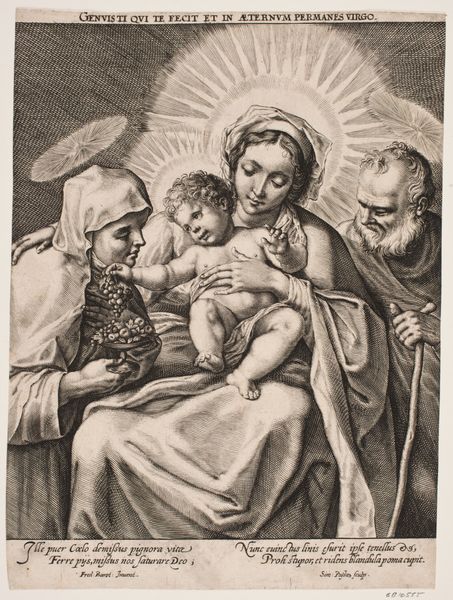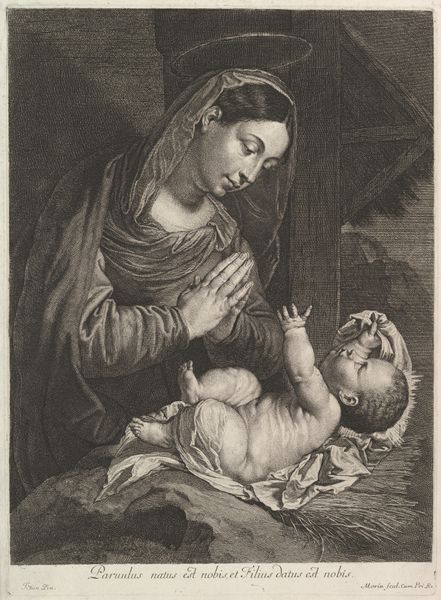
The Virgin and child with the infant Saint John the Baptist, with the Christ child lying on her lap and turning to kiss the Baptist 1760 - 1800
0:00
0:00
Dimensions: Plate: 16 9/16 × 11 1/4 in. (42 × 28.5 cm) Sheet: 19 5/8 × 15 11/16 in. (49.8 × 39.8 cm)
Copyright: Public Domain
Curator: Ah, another masterpiece hinting at eternal themes. This engraving from between 1760 and 1800, likely crafted by Johann Gottlieb Schmidt, presents the Virgin and Child with the infant Saint John the Baptist. Editor: It has this drowsy sweetness to it, like a half-remembered dream. All that soft flesh rendered in such crisp lines feels almost... melancholic. Is it just me? Curator: Not at all. The imagery carries layers, doesn't it? The sleeping Christ child presages the Passion, while John’s presence symbolizes their intertwined destinies. The lilies are classic symbols of Mary’s purity and also represent the resurrection. The cross staff alludes to the future sacrifice. The composition makes a prediction, really. Editor: Yes, exactly, every mother sees both present joy and future sorrows. The Baroque loved these intense contrasts! What really intrigues me, though, is the maternal gaze. It's averted, almost mournful. Is she already anticipating his fate? Is it hope, despair, devotion? The expression in those simple lines really grabs me. Curator: That's the brilliance of line engraving – distilling profound emotion through apparent simplicity. I wonder about the original context, though. Being a print, it was probably meant for wider dissemination of a painter's original composition or perhaps, a reflection of devotional artwork, allowing people access who wouldn't otherwise have it. What is that little gesture like she is drawing something near him? Editor: In terms of visual storytelling, consider the contrast. We’ve got the youthful innocence of the children juxtaposed with these potent symbols of sacrifice and faith. Visually, it is an essay on childhood and fate, don’t you think? It's no surprise such images endured for centuries, striking such emotional and psychological chords with viewers and within family life itself. Curator: Precisely! And the image’s visual strength relies entirely on those meticulously rendered lines. Without color, light and shadow carry all the emotional weight. Well, it really holds up beautifully, doesn’t it? So evocative after all this time. Editor: Absolutely. And maybe that lingering melancholic beauty makes us feel that, after all these centuries, nothing has changed with parents who think of the fate that might await their precious children.
Comments
No comments
Be the first to comment and join the conversation on the ultimate creative platform.

